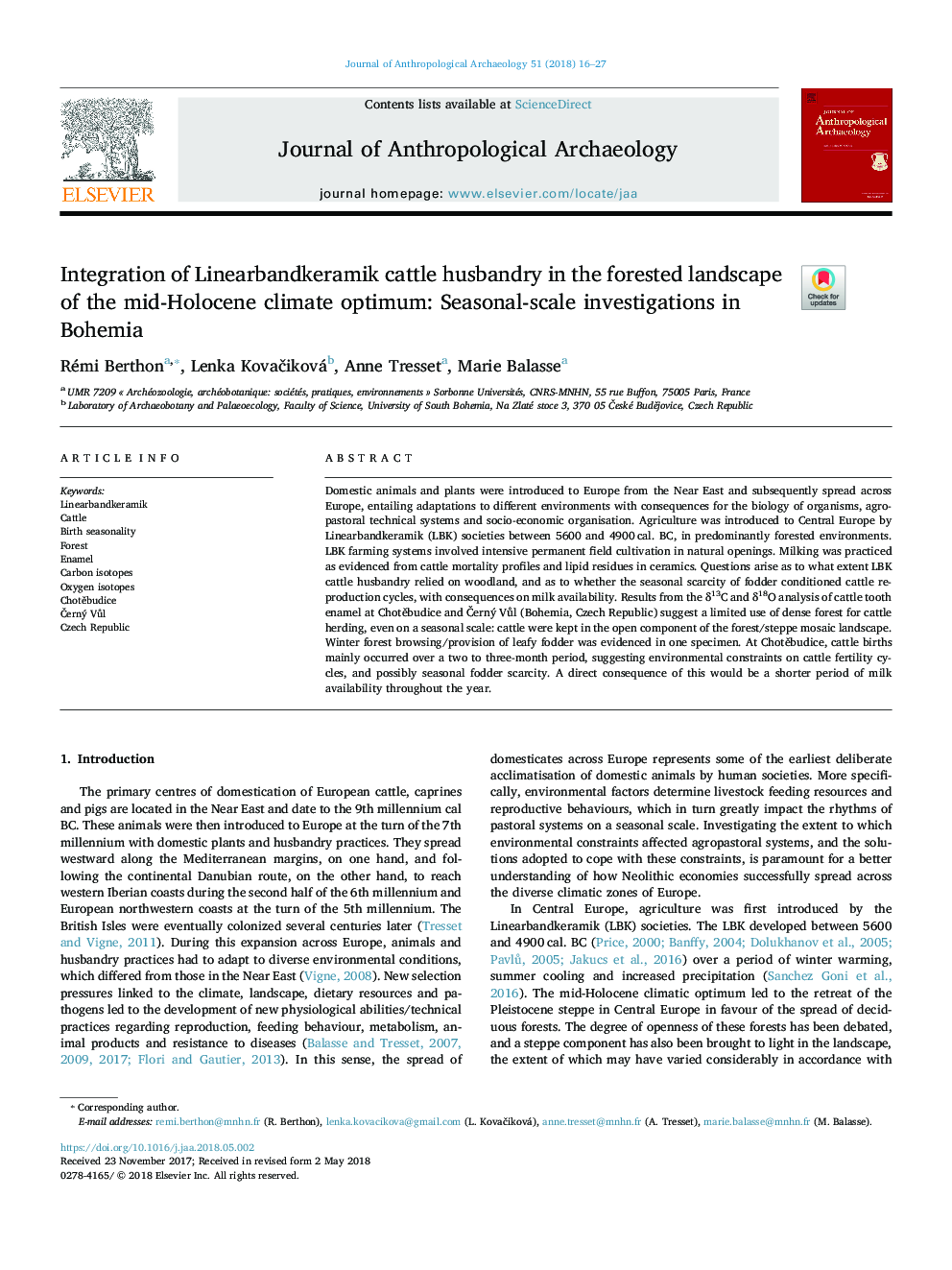| Article ID | Journal | Published Year | Pages | File Type |
|---|---|---|---|---|
| 7440323 | Journal of Anthropological Archaeology | 2018 | 12 Pages |
Abstract
Domestic animals and plants were introduced to Europe from the Near East and subsequently spread across Europe, entailing adaptations to different environments with consequences for the biology of organisms, agropastoral technical systems and socio-economic organisation. Agriculture was introduced to Central Europe by Linearbandkeramik (LBK) societies between 5600 and 4900â¯cal. BC, in predominantly forested environments. LBK farming systems involved intensive permanent field cultivation in natural openings. Milking was practiced as evidenced from cattle mortality profiles and lipid residues in ceramics. Questions arise as to what extent LBK cattle husbandry relied on woodland, and as to whether the seasonal scarcity of fodder conditioned cattle reproduction cycles, with consequences on milk availability. Results from the δ13C and δ18O analysis of cattle tooth enamel at ChotÄbudice and Äerný Vůl (Bohemia, Czech Republic) suggest a limited use of dense forest for cattle herding, even on a seasonal scale: cattle were kept in the open component of the forest/steppe mosaic landscape. Winter forest browsing/provision of leafy fodder was evidenced in one specimen. At ChotÄbudice, cattle births mainly occurred over a two to three-month period, suggesting environmental constraints on cattle fertility cycles, and possibly seasonal fodder scarcity. A direct consequence of this would be a shorter period of milk availability throughout the year.
Keywords
Related Topics
Social Sciences and Humanities
Arts and Humanities
History
Authors
Rémi Berthon, Lenka KovaÄiková, Anne Tresset, Marie Balasse,
